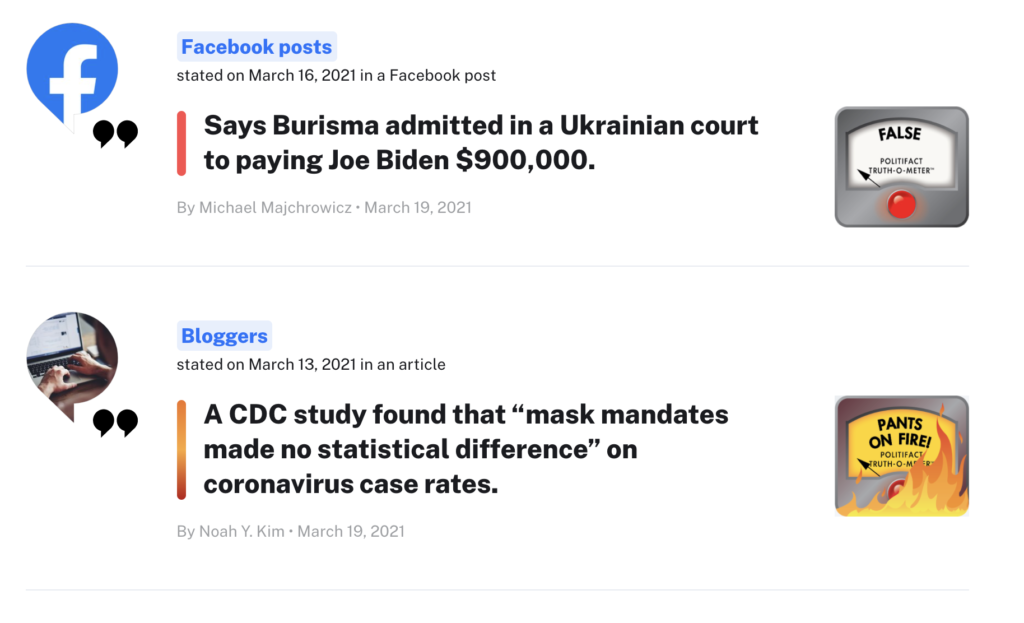This is an introduction to fact-checking sites and a clear definition of false information streams.
From politicians to marketers, from advocacy groups to brands — everyone who seeks to convince others has an incentive to distort, exaggerate or obfuscate the facts. This is why fact-checking has grown in relevance and has spread around the world in the recent decade.
According to a paper by Alexios Mantzarlis “MODULE 5 – Fact-checking 101” the type of fact-checking happens not before something is published but after a claim becomes of public relevance. This form of “ex post” fact-checking seeks to make politicians and other public figures accountable for the truthfulness of their statements. Fact-checkers in this line of work seek primary and reputable sources that can confirm or negate claims made to the public.
Alexios Mantzarlis also wrote about two moments, which were particularly significant to the growth of this journalistic practice. A first wave was kick-started by the 2009 Pulitzer Prize for national reporting, assigned to PolitiFact, a fact-checking project launched just over a year earlier by the St Petersburg Times (now Tampa Bay Times) in Florida. PolitiFact’s innovation was to rate claims on a “Truth-O-Meter”, adding a layer of structure and clarity to the fact checks.

The second wave of fact-checking projects emerged following the global surge in so-called ‘fake news’. The term, now co-opted and misused, describes entirely fabricated sensationalist stories that reach enormous audiences by using social media algorithms to their advantage.

This second wave often concentrated as much on fact-checking public claims as debunking these viral hoaxes. Debunking is a subset of fact-checking and requires a specific set of skills that are in common with verification.

In part two an analysis and comparison of cloaked websites, which are sites published by individuals or groups who conceal authorship in order to
disguise deliberately a hidden political agenda, and fact-checking sites will be done. Therefore the websites will be compared on the basis of the following factors:
- User Experience (Survey about fact checking websites credibility)
- Design Differences (Typography, Images, etc.)
- Content (Expertise, Rigour, Transparency, Reliability)
- Overall Usability
